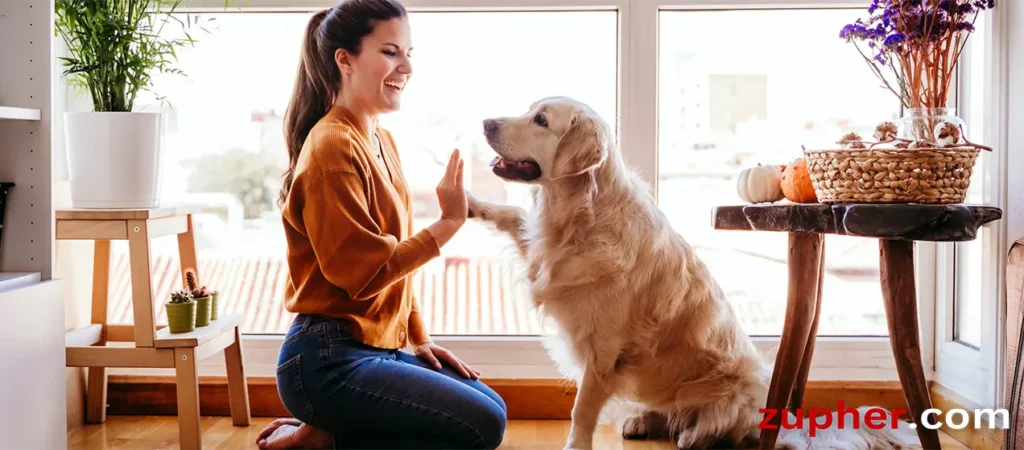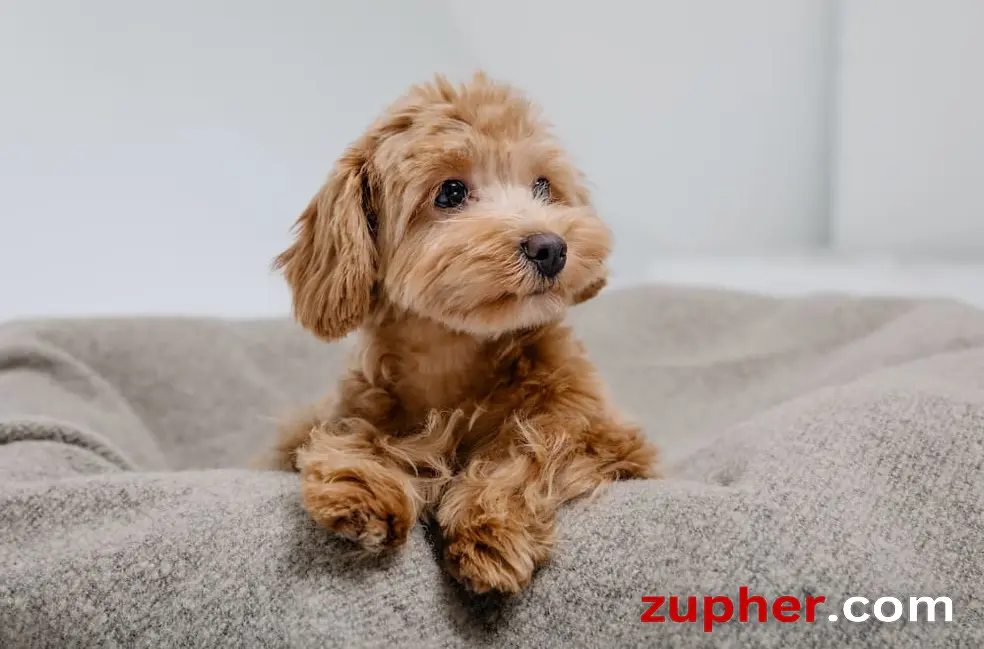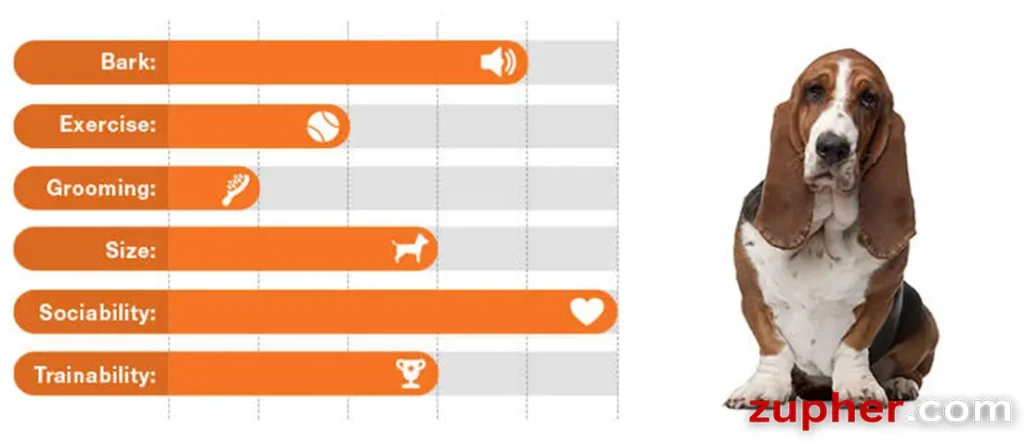What dog breed is most suitable for apartment living?

Introduction
A. Definition of Apartment Living
Living in an apartment means staying in a place that’s part of a larger building with many other homes. These places can be small, so it’s crucial to choose a pet that fits.
B. Importance of Choosing the Right Dog Breed for Apartment Living
Picking the right dog breed for apartment living is super important. Dogs have different needs, and some are better suited to apartment life than others. Making the right choice ensures a happy life for both you and your furry friend.
C. Overview of Factors to Consider
When deciding on a dog breed for apartment living, various factors come into play. Things like size, energy level, noise level, and temperament are important to think about. Each dog breed has its characteristics that make it suitable or unsuitable for apartment living. It’s essential to consider these factors to find a dog that fits well into your living space and lifestyle.

Characteristics of an Apartment-Friendly Dog Breed
Choosing a dog breed that suits apartment living involves considering various characteristics.
A. Size Considerations
When picking a dog for an apartment, size matters. Smaller breeds, like Chihuahuas or French Bulldogs, often adapt better to limited space than larger breeds, like Great Danes or Saint Bernards. They need less room to move around and can be more comfortable in smaller living quarters.
B. Energy Level
An apartment-friendly dog should have a moderate energy level. High-energy breeds, like Border Collies or Jack Russell Terriers, might find apartment life challenging without sufficient exercise and mental stimulation. On the other hand, low-energy breeds, such as Bulldogs or Basset Hounds, are usually content with shorter walks and indoor activities.
C. Temperament and Behavior
The temperament and behavior of a dog are crucial for apartment living. Dogs that are calm, friendly, and adaptable tend to fare well in close quarters. Breeds like Cavalier King Charles Spaniels or Shih Tzus are known for their gentle nature and adaptability, making them suitable companions for apartment dwellers.
D. Trainability
Trainability is another essential factor when selecting a dog breed for apartment living. Breeds that are easy to train and eager to please, such as Poodles or Labrador Retrievers, can quickly learn to behave well in an apartment setting. Training helps ensure that your dog understands boundaries and behaves appropriately in shared spaces.

Popular Dog Breeds for Apartment Living
When it comes to choosing a dog breed for apartment living, several popular options fit well into different size categories.
A. Small Breeds
Small breeds are often the top choice for apartment dwellers due to their compact size and adaptability to limited space. They typically weigh less than 20 pounds and require minimal exercise. Examples include the Yorkshire Terrier and Pomeranian.
B. Medium Breeds
Medium-sized breeds can also thrive in apartment settings, provided they receive adequate exercise and mental stimulation. They offer a balance between small and large breeds, making them versatile companions. Examples include the French Bulldog and Cavalier King Charles Spaniel.
C. Large Breeds
Although large breeds may seem unlikely candidates for apartment living, some can adapt surprisingly well if their exercise needs are met. These breeds tend to be more laid-back and less energetic. Examples include the Greyhound and surprisingly, the Great Dane.
D. Mixed Breeds
Mixed breeds, also known as mutts, can offer the best of both worlds. They may inherit desirable traits from their various breed backgrounds, such as size, temperament, and trainability. Mixed breeds often exhibit hybrid vigor, making them resilient and healthy. Examples include the Cockapoo and Maltipoo.

Exercise and Activity Requirements
Ensuring proper exercise for apartment dogs is essential for their physical and mental well-being.
A. Importance of Exercise for Dogs in Apartments
Exercise is crucial for all dogs, even those living in apartments. It helps maintain their physical health, prevents obesity, and releases excess energy, which can reduce behavioral issues like chewing or excessive barking.
B. Ways to Meet Exercise Needs in a Limited Space
Meeting a dog’s exercise needs in a small living space requires creativity. Activities like indoor games, puzzle toys, and interactive play sessions can provide mental stimulation and physical exercise. Regular walks outside are also vital for fresh air and socialization.
C. Activities Suitable for Apartment-Dwelling Dogs
Several activities are suitable for dogs living in apartments. Indoor games such as hide-and-seek, fetch in a hallway, or tug-of-war can keep them entertained and active. Interactive toys that dispense treats or challenge their problem-solving skills are also excellent choices. Additionally, short walks around the neighborhood or trips to a nearby dog park offer opportunities for exercise and socialization.

Grooming and Maintenance Considerations
Taking care of a dog’s grooming and maintenance needs is important for their health and comfort, especially in an apartment setting.
A. Coat Type and Shedding
Different dog breeds have varying coat types, which affect how much they shed. Breeds with short, smooth coats, like Beagles or Dachshunds, typically shed less and are easier to maintain in an apartment. On the other hand, breeds with long or thick coats, such as Huskies or Golden Retrievers, may require more frequent grooming to manage shedding.
B. Grooming Frequency
The frequency of grooming varies depending on the dog’s coat type and length. Dogs with short coats may only need a weekly brush to remove loose hair and keep their coat shiny. However, breeds with longer or denser coats may require daily brushing to prevent matting and tangles. Additionally, regular baths, nail trimming, and ear cleaning are essential parts of a dog’s grooming routine.
C. Allergies and Sensitivities
Some people may have allergies or sensitivities to dogs, particularly to their dander or saliva. Breeds that shed less or have hypoallergenic coats, such as Poodles or Maltese, are often recommended for individuals with allergies. However, it’s essential to note that no dog breed is entirely hypoallergenic, and individual reactions may vary. Regular grooming and cleaning aid in reducing allergens within the household.
Adaptability to Apartment Living Conditions
Adapting to apartment life involves more than just physical space—it’s about how well a dog can handle various aspects of apartment living.
A. Noise Tolerance
In an apartment setting, there can be various sources of noise, such as neighbors, traffic, or other pets. Dogs with a higher tolerance for noise, like Bulldogs or Shih Tzus, are better suited for apartment living as they are less likely to become anxious or reactive to loud sounds.
B. Climate Considerations
The climate of the area where you live can also impact a dog’s comfort in an apartment. Breeds with thick coats, like Huskies or Malamutes, may struggle in hot climates without proper ventilation or air conditioning. Conversely, breeds with shorter coats, such as Chihuahuas or Greyhounds, may be more adaptable to warmer environments.
C. Socialization Needs
Living in an apartment means being near other people and pets. Dogs that are well-socialized and friendly towards strangers and other animals tend to adapt better to apartment living. Breeds known for their sociable nature, like Golden Retrievers or Labrador Retrievers, are often good choices for apartment dwellers who want a companion that can easily interact with others.
Health Considerations
Ensuring the health and well-being of your dog is crucial, especially in an apartment setting.
A. Common Health Issues in Apartment-Friendly Breeds
While some dog breeds are well-suited for apartment living, they may still be prone to certain health issues. For example, small breeds like Chihuahuas or Pugs may experience dental problems due to their small mouths, while larger breeds like Bulldogs or Pugs may be prone to respiratory issues.
B. Preventative Care
Preventative care plays a vital role in maintaining your dog’s health in an apartment. Regular veterinary check-ups, vaccinations, and parasite prevention are essential for preventing common health issues. Additionally, providing a balanced diet, regular exercise, and dental care can help keep your dog healthy and happy.
C. Vet Accessibility and Services in Urban Areas
Living in an urban area often means easy access to veterinary services, which is beneficial for apartment dwellers. It’s essential to research and find a reputable veterinarian nearby who can provide routine care as well as emergency services if needed. Additionally, having pet insurance can help alleviate the financial burden of unexpected veterinary expenses.
Responsible Ownership and Apartment Regulations
Being a responsible dog owner in an apartment involves understanding regulations and making necessary lifestyle adjustments.
A. Understanding Apartment Pet Policies and Regulations
Before bringing a dog into an apartment, it’s crucial to understand the building’s pet policies and regulations. This includes rules regarding breed restrictions, size limits, and any additional fees or deposits required for pet ownership.
B. Financial Considerations
Owning a dog comes with financial responsibilities, especially in an apartment setting. Apart from the initial cost of acquiring the dog, there are ongoing expenses such as food, grooming, veterinary care, and pet insurance. It’s essential to budget for these expenses to ensure the well-being of your furry companion.
C. Time Commitment and Lifestyle Adjustments
Owning a dog requires a significant time commitment and lifestyle adjustments, particularly in an apartment. Dogs need daily exercise, mental stimulation, and companionship. It’s essential to consider your schedule and lifestyle to ensure you can meet your dog’s needs and provide a loving and supportive environment for them.
Conclusion
In conclusion, choosing the right dog breed for apartment living involves considering various factors to ensure a happy and harmonious living arrangement.
A. Recap of Factors to Consider When Choosing a Dog Breed for Apartment Living
When selecting a dog breed for apartment living, factors such as size, energy level, temperament, grooming needs, and adaptability to apartment conditions are crucial. It’s essential to choose a breed that fits well with your lifestyle and living situation.
B. Importance of Responsible Ownership
Responsible ownership is vital when bringing a dog into an apartment. This includes understanding and following apartment pet policies, providing proper care and attention, and being financially prepared for the expenses associated with dog ownership.
C. Final Recommendations and Tips for Prospective Apartment Dog Owners
For prospective apartment dog owners, it’s recommended to research different dog breeds thoroughly and consider adopting from shelters or rescue organizations. Additionally, investing time in proper training, socialization, and regular exercise for your dog is essential for their well-being and happiness in an apartment setting. Lastly, being patient, understanding, and committed to your dog’s needs will help foster a strong bond and a fulfilling companionship in your apartment lifestyle.
People also ask
What dog breed is best for apartment life?
Small breeds like Chihuahuas or French Bulldogs are often best for apartments due to size.
What is the best dog to have in a flat?
Breeds with low energy levels and small sizes, such as Cavalier King Charles Spaniels.
Do dogs do well in apartments?
Yes, as long as they receive proper exercise, training, and attention.
What is the best dog for inside the house?
Breeds with calm temperaments and low exercise needs, like Pugs or Maltese.
Which dog has the highest maintenance?
Breeds with long, thick coats like Huskies or Malamutes typically have higher maintenance needs.
What is the highest maintenance dog?
Breeds such as Afghan Hounds or Old English Sheepdogs are among the highest maintenance.



